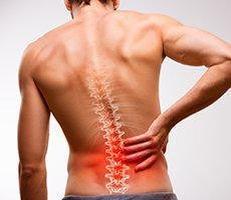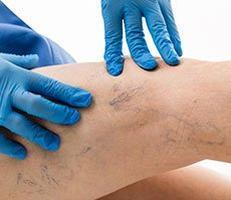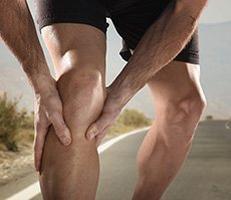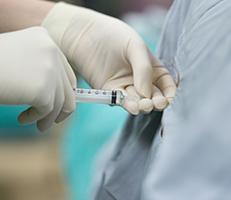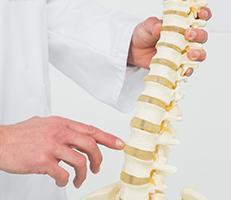
Pain Relief Procedures
We
are committed to relieving you of pain so that you can live life to the fullest. We offer a wide variety of
effective pain relief procedures, performed by our board certified, highly experienced doctors. Our doctors
will consult and guide you on which procedures will work the best for you. We don't believe in a
one-size-fits-all approach and will further tailor the pain relief procedure to you and your specific needs.
Through our unique and integrated approach, our patients trust us to get them back to feeling and functioning
their best as quickly and safely as possible.
List of Pain Relief Procedures
Below
is a basic list of pain relief procedures performed. If you have any questions or want to know if we perform a
certain procedure, just ask during your consultation with the doctor. Click each of the procedures to find out
more.
Facet joint Injections
Facet
joint injections are performed for facet joint pain. Facet joints can be injected with long acting local
anesthetic and anti-inflammatory agents, which can alleviate facet joint pain for long
periods. Learn More
Facet joint Denervation
This
is a straightforward procedure that is normally carried out if you have had a successful result from facet
joint injections. Special needles are carefully placed under continuous fluoroscopy so that their tips lie
exactly on the nerves that carry pain signals from the facet joints. Radiofrequency energy is then passed
through the needles so that that tissue at the tip is heated to about 80 degrees C for about a minute. This
coagulates and inactivates the nerves.
Pulsed Radiofrequency Treatment
Passing
alternating radiofrequency energy through tissues without significantly heating it can selectively inactivate
pain-carrying nerve fibers, which tend to be smaller in diameter than the fibers that control muscles and
allow normal sensation. Conventional radiofrequency treatment results in the coagulation of all tissues at the
tip of the needle, including all nerve tissue. In most situations this does not matter, but in some
situations, it is important to maintain as much normal nerve function as possible. Learn More
Discography
Discography
involves the insertion of a thin needle into one or more discs. Then a solution is injected into the disc to
see if it is painful, followed by local anesthetic to see if the pain goes away. Learn More
Epidural Steroid Injection
The
word "epidural" simply refers to a layer of supporting tissue outside the spinal cord. In an epidural
injection, a solution of local anesthetic, steroidal anti-inflammatory, and, in our practice, a non-steroidal
natural anti-inflammatory called Sarapin is injected into the epidural space. Learn More
Transforaminal Epidural Injection
This
is an important adjunct to epidural steroid injection and the two are normally done together. If you have
lumbar radiculopathy or cervical radiculopathy, you will probably also have one or more transforaminal
epidural injections. Learn More
Sacroiliac Joint Steroid Injection
In
the first instance a solution of long-acting local anesthetic, long acting anti-inflammatory steroid, and
Sarapin is injected into one or both joints. If this is successful, the joint can then be denervated in a
similar way to facet joint denervation.
Selective Nerve Root Block (SNRB)
Another
common injection, a selective nerve root block (SNRB), is primarily used to diagnose the specific source of
nerve root pain and, secondarily, for therapeutic relief of low back pain and/or leg pain. Learn More
Lumbar Sympathetic Block
Injection
needles will be positioned and then there are three main ways to produce the block: injection of a long acting
local anesthetic to produce a diagnostic block to safely see if your pain can be treated this way; injection
of a neurolytic substance such as phenol or alcohol to destroy the lumbar sympathetic nerves; and the use of
radiofrequency energy to similarly destroy the nerves in a highly controlled way. Learn More
Stellate Ganglion Block
The
stellate ganglion is a collection of autonomic sympathetic nerves, which lies in front of the spine at the
level of your larynx. It can be a site where pain signals from the face, heart, arm, or hands are processed.
It can therefore sometimes be useful to block it.
Dekompressor Discectomy
The
Stryker Dekompressor is a relatively new technique for the decompression of contained lumbar herniated discs.
A special device the size of a needle is inserted into the affected disc. This then rotates like a drill
removing some of the nucleus of the damaged disc, thus decompressing it and allowing the bulge to reduce. This
in turn reduces the pain from both the disc and the nerve root. Learn More
Percutaneous Disc Nucleoplasty
This
is a relatively new technique for the decompression of contained lumbar herniated discs. A special device the
size of a needle is inserted into the affected disc. This probe has radiofrequency electrodes at its tip and
is slightly angled. It is moved around inside the disc vaporizing a very controlled amount of disc nucleus,
typically 1 - 2 ml.
Vertebroplasty
Involves the
injection of bone cement into the crushed vertebral body, which stabilizes it and reduces pain by reducing
movement at the fracture site. It is well established and straightforward to perform in an ambulatory surgery
setting. A newer alternative treatment is Kyphoplasty.
Kyphoplasty
Involves the
insertion of needles into the damaged vertebral body, through which balloons are passed. These are inflated
under high pressure, which expands the compression fracture and corrects the deformity. Once corrected, liquid
bone cement is injected into the vertebra to permanently fix the restored shape. Learn More
Spinal Cord Stimulation
Spinal
cord stimulation can be very effective at treating nerve pain (neuropathic pain) and dysfunction from a number
of different conditions. It has been shown to be particularly effective at relieving resistant nerve pain such
as lumbar radiculopathy following spinal surgery. It involves the implantation of a wire and a device the size
of a matchbox. Learn More
Sacral Nerve Root Stimulation
This
is a new and effective treatment for a number of loosely related bladder and bowel control problems. The other
main treatment alternative is spinal cord stimulation.
Intrathecal Pump Implant
Intrathecal
drug delivery devices are advanced pain management systems for patients whose pain cannot be adequately be
controlled by conventional oral or systemic analgesics. Delivery of strong painkillers such as morphine
directly into the cerebrospinal fluid can avoid many of the unpleasant side effects of conventional drug
delivery.
Manipulation Under Anesthesia (MUA)
This
is a form of therapy that allows doctors to move your body without causing you and discomfort or pain. Learn More
RACZ Caudal Neurolysis
Relieves
lower back and leg pain most often caused by scarring from a prior back surgery. Learn More
Varicose Vein Treatment
Advanced
treatments are often required to address the underlying cause of varicose veins. Learn More
BOTOX for Migraines
BOTOX
is a prescription medicine that is injected to prevent headaches in adults with chronic migraine who have 15
or more days each month with headache lasting 4 or more hours each day in people 18 years or older. Learn More

